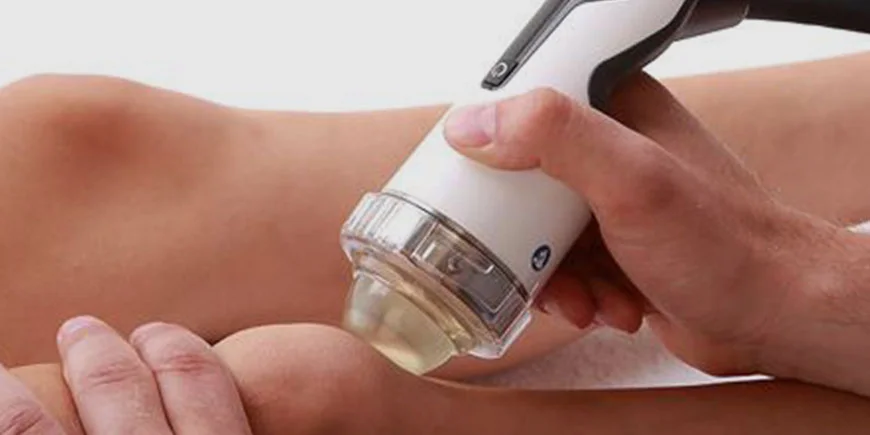Shockwave Therapy is a popular non-invasive alternative to many surgical or steroid-related procedures. “Shockwave Therapy (ESWT) offers two main advantages over traditional surgical methods: fewer potential complications and a faster return to normal activity.” FDA
How Does Shockwave Therapy Work?
Shockwave therapy treatment uses an acoustic wave that is pulsated at a high-energy frequency, directly to the painful or affected area.
Most treatments are applied by a therapist using a hand-held device, which turns compressed air into low-energy sound waves. Light pressure is applied and the device is moved across the damaged areas that require treatment.
Shockwave therapy has two main ‘modes of action’ that can help with persistent pain.
Firstly, the shockwaves work to ‘desensitise’ nerve endings which can immediately reduce pain in the local area. Secondly, the waves stimulate blood flow in the area, causing a small amount of localised inflammation.
In the days immediately following the treatment, the body naturally tries to heal the inflammation and in doing so, encourages the regeneration of cells, repairing damaged tissue and reducing pain.
Shockwave therapy can also help with issues relating to scar tissue. As scar tissue is much denser and much less elastic than normal tissue, the sound waves can help break it down, improving mobility and reducing discomfort.
Shockwave is used for the treatment of but not limited to:
- Plantar Fasciopathy
- Medial Tibial Stress Syndrome (shin splints)
- Knee & Joint arthritis
- Bone & Stress Fractures
- Achilles Pain
- Tibialis Posterior Tendon Syndrome
- Medial Tibial Stress Syndrome
- Haglunds Deformity
- Peroneal Tendon
- Tibialis posterior ankle sprain
Advantages of Shockwave Therapy:
- Fast and effective pain relief
- Mobility restoration
- Non-surgical and non-invasive
- No need for medication
- No risk of infection
- No risk of tendon rupture
- Clinically proven
- No anaesthesia
- Fewer complications

